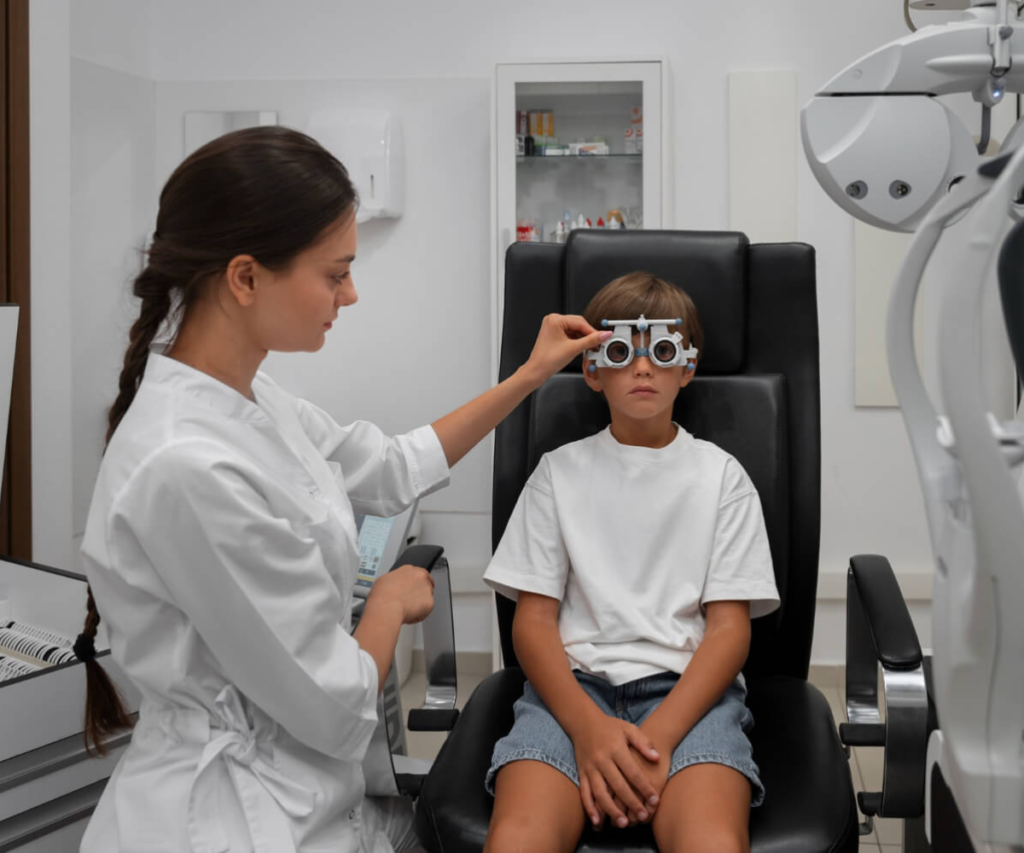Introduction

Eye exams lung risk detection is emerging as a powerful tool in preventive healthcare. Your eyes are more than just a window to the soul—they can also provide critical insights into your overall health. Recent medical research shows that subtle changes in the eyes can signal a wide range of conditions, including cardiovascular disease, diabetes, neurological disorders, and even early signs of respiratory damage. By understanding how eye health connects to lung function, individuals can uncover hidden risks and take proactive steps toward long-term well-being.
How Eye Health Reflects Overall Health
The eyes are unique in that they allow doctors to observe blood vessels, nerves, and tissue without invasive procedures. Because eye tissue shares microscopic structures with other organs, abnormalities observed during an eye exam can reflect systemic health issues.
The Eyes and the Cardiovascular System
Changes in the tiny blood vessels in the retina may indicate high blood pressure, clogged arteries, or increased risk of stroke. For instance, an ophthalmologist may notice narrowing or blockage in retinal vessels that mirrors cardiovascular problems elsewhere in the body. Early detection of these signs can prevent life-threatening events.
Detecting Diabetes Through the Eyes
Diabetic retinopathy is a condition in which high blood sugar levels damage blood vessels in the retina. Often, changes appear in the eyes before elevated glucose levels are detected in routine blood tests. Detecting these early signs through a comprehensive eye exam allows patients to manage diabetes proactively and prevent vision loss.eye exams lung risk
Eye Clues to Neurological Disorders
Certain eye abnormalities, such as changes in peripheral vision or eye movement, may indicate neurological issues including stroke, brain tumors, or trauma. For example, a loss of side vision may reflect damage to the brain rather than the eyes themselves. By identifying these warning signs, eye exams can prompt timely neurological evaluation.
Other Health Conditions Detectable Through the Eyes

- Autoimmune Diseases: Conditions like lupus and multiple sclerosis can cause ocular inflammation.
- High Cholesterol: Deposits in the cornea or retinal vessels may indicate lipid imbalances.
- Infections and Cancers: Some viral infections and systemic cancers manifest in eye tissue before other symptoms appear.https://www.youtube.com/watch?v=Zh2lyMmGMQM
The Importance of Regular Eye Exams
Eye exams are not just for correcting vision—they are critical for monitoring overall health. Early detection can prevent disease progression and save lives.
Recommended Frequency of Eye Exams
- Adults under 40: Eye exams should be conducted if risk factors exist, such as family history, diabetes, or high blood pressure.
- Adults 40–64: Baseline comprehensive eye exams are advised to identify early signs of disease.
- Adults 65 and older: Eye exams every one to two years help monitor for age-related eye conditions and systemic health issues. eye exams lung risk
What Happens During an Eye Exam
A comprehensive eye exam evaluates:
- Medical and family history
- Visual acuity
- Pupil response
- Peripheral (side) vision
- Eye movement and coordination
- Eye pressure (for glaucoma detection)
- The cornea, lens, and retina
- Optic nerve health
- Need for corrective lenses
These assessments allow healthcare professionals to detect both ocular and systemic conditions.
Case Study: How an Eye Exam Can Save Lives
Consider the example of Robert Waters, who underwent a routine eye examination. The ophthalmologist observed changes in the retinal blood vessels and referred him for cardiovascular evaluation. Testing revealed a 90% blockage in his carotid artery—a condition that could have caused a stroke. Within weeks, Robert underwent surgery to restore blood flow and returned to normal activities.

This example underscores how eye exams can serve as a non-invasive early warning system for critical health conditions.
Preventive Measures to Protect Eye and Overall Health
Lifestyle Tips
- Maintain a balanced diet rich in antioxidants, omega-3 fatty acids, and vitamins A, C, and E.
- Exercise regularly to support cardiovascular health.
- Control blood sugar levels if diabetic or pre-diabetic.
- Avoid smoking, which increases the risk of retinal and systemic diseases.
- Wear protective eyewear in high-risk environments.
Medical Monitoring
- Schedule regular eye exams as recommended by your healthcare provider.
- Keep track of family history regarding eye and systemic health issues.
- Report any sudden vision changes or eye discomfort promptly.
Advances in Eye Health Research
Emerging research highlights the role of advanced imaging, artificial intelligence, and blood biomarkers in detecting systemic health issues through the eyes. New technologies can identify microvascular changes, nerve damage, and early signs of diseases like hypertension, diabetes, and Alzheimer’s disease—often before traditional tests detect them .Eye exams lung risk
Conclusion

Your eyes are not just for seeing—they are vital indicators of your overall health. Regular comprehensive eye exams can detect silent diseases, prevent complications, and provide insights into systemic conditions ranging from diabetes and high blood pressure to neurological disorders and cardiovascular disease. Prioritizing eye health is a proactive step toward safeguarding your entire body.




